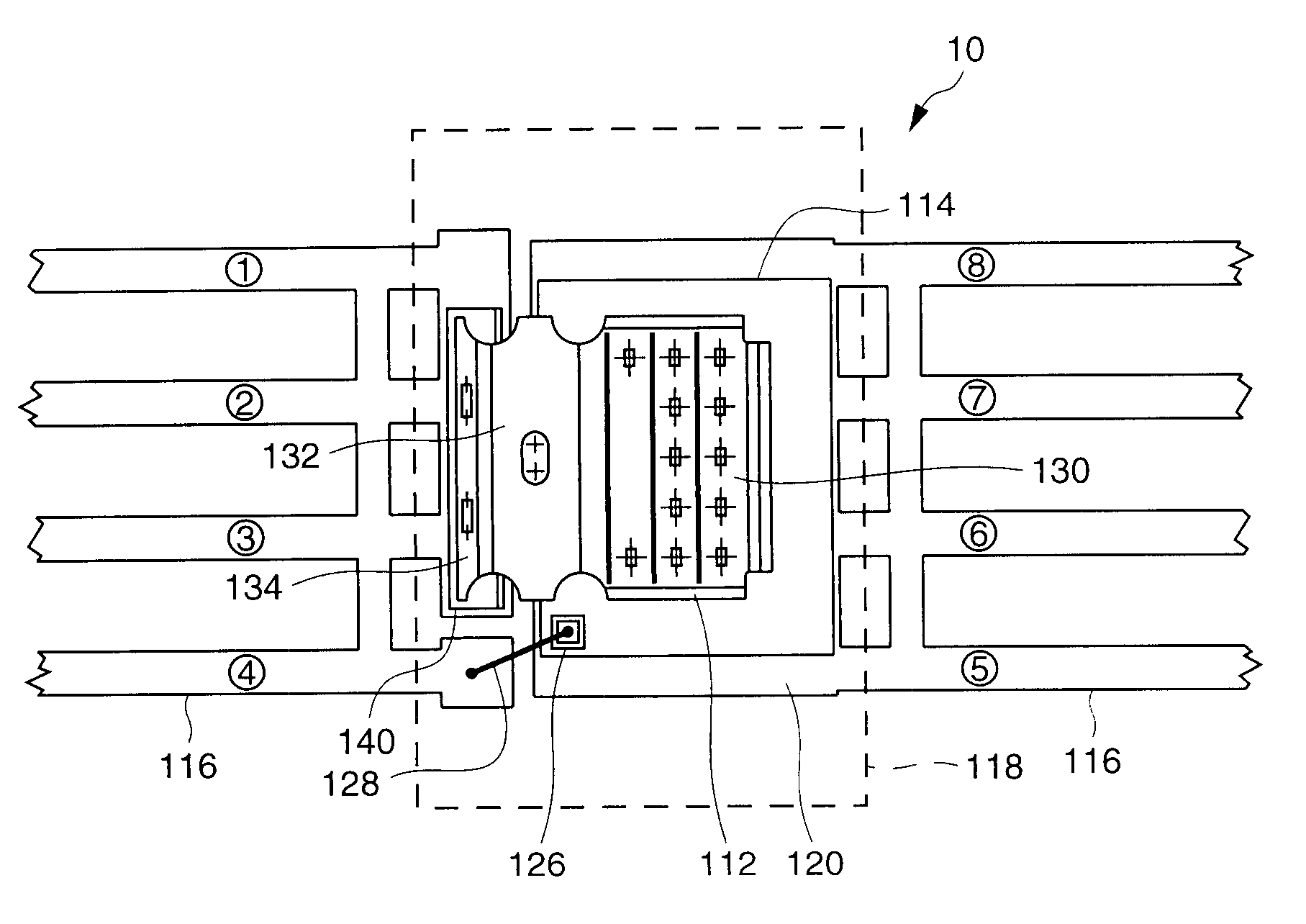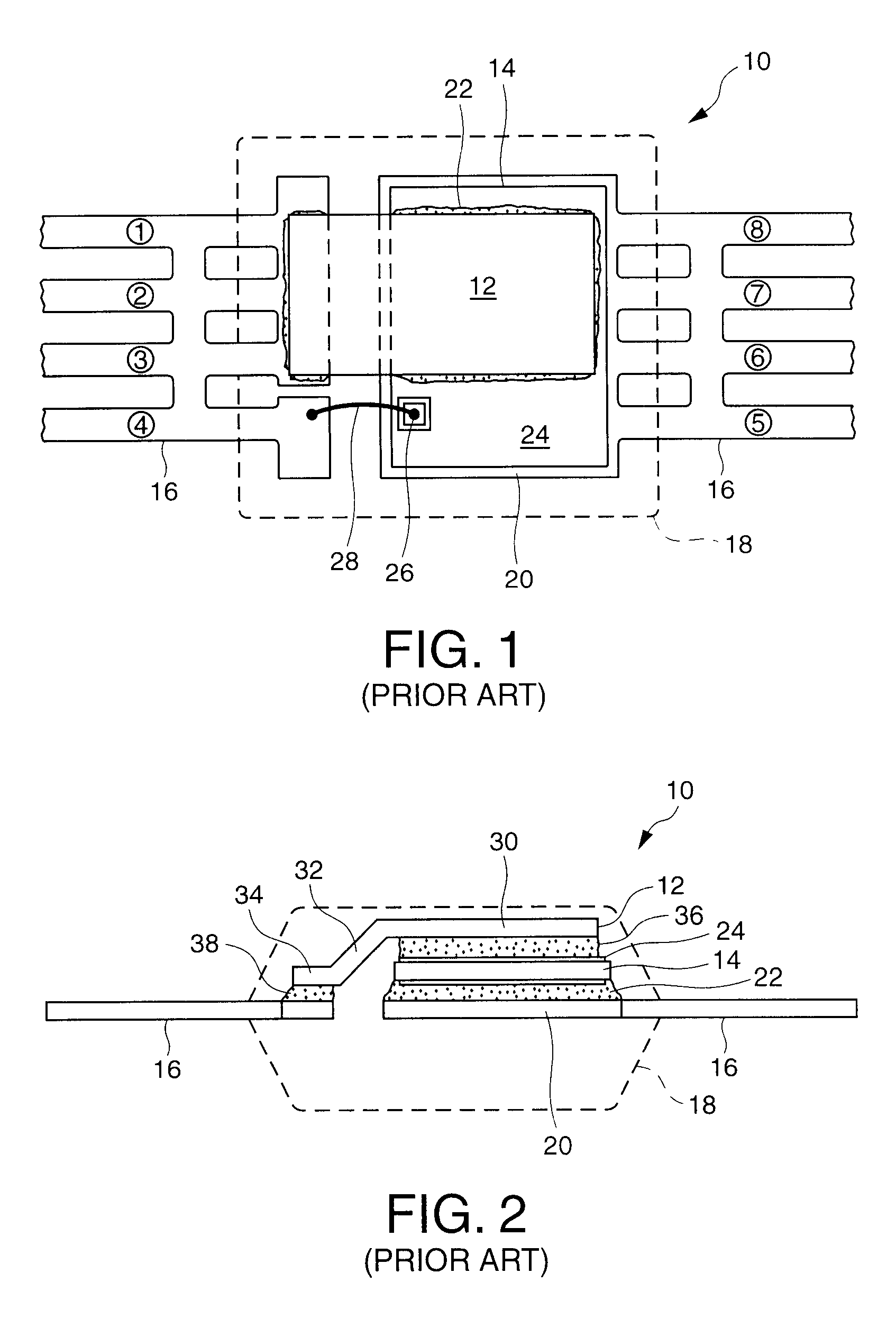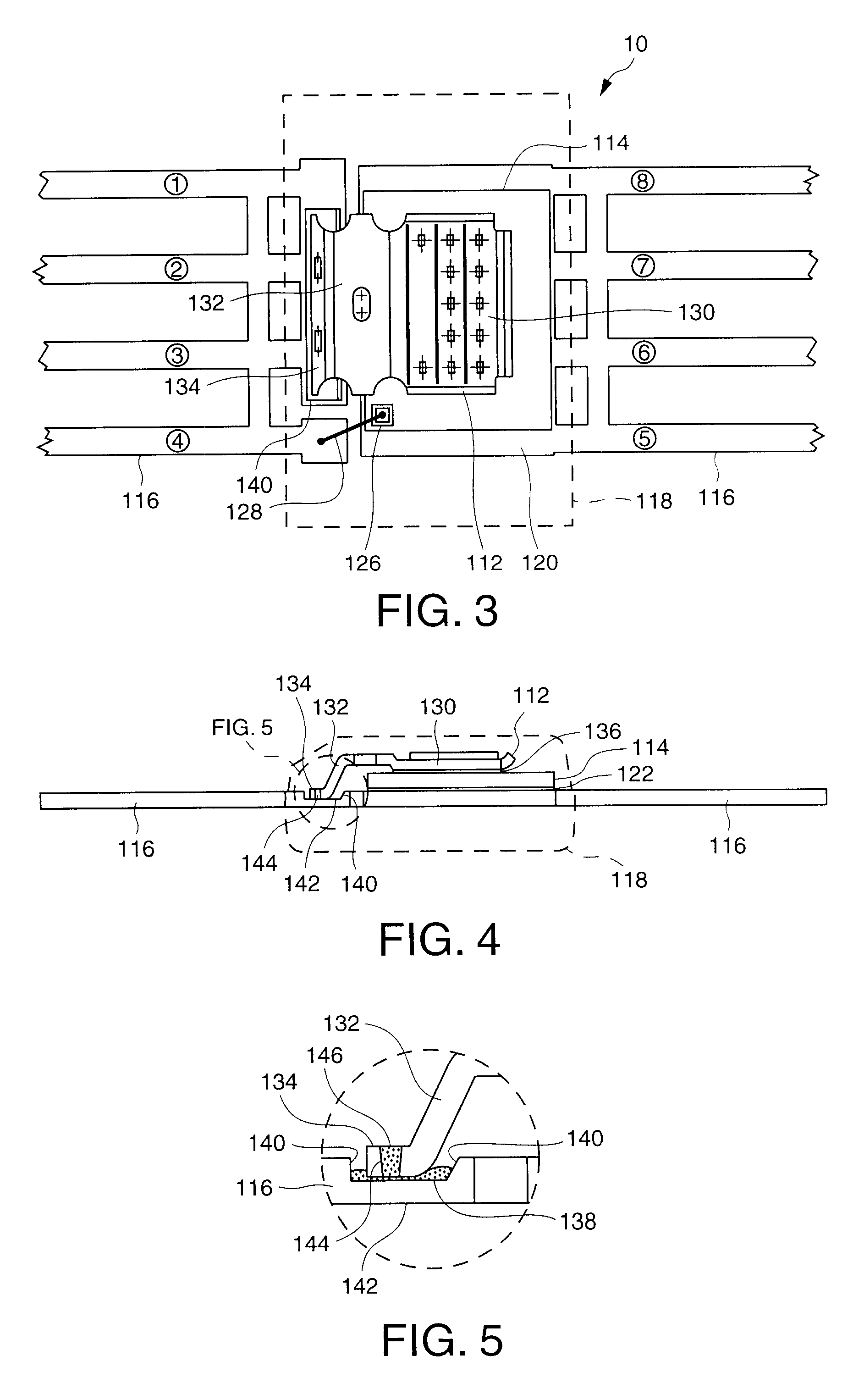Attaching semiconductor dies to substrates with conductive straps
a technology of conductive straps and semiconductor dies, applied in semiconductor devices, semiconductor/solid-state device details, electrical apparatus, etc., can solve the problems of forming craters and kirkendall voids, high parasitic source-inductance, and relative high internal thermal and electrical resistan
- Summary
- Abstract
- Description
- Claims
- Application Information
AI Technical Summary
Benefits of technology
Problems solved by technology
Method used
Image
Examples
Embodiment Construction
FIGS. 1 and 2 are top plan and side elevation views, respectively, of a eight-lead, lead frame-type of power MOSFET semiconductor package 10 having a conductive strap 12 electrically connecting the die 14 of the package to the substrate 16 thereof in accordance with the lap-joint strap attachment method of the prior art. The protective plastic body 18 of the package 10 is shown in dotted outline to reveal the components therein.
In the exemplary PMOSFET device of FIG. 2, the die 14 is attached to the die paddle 20 of the lead frame 16 by a layer of solder or conductive adhesive 22. This conductive layer also serves to connect the drains of a plurality of individual MOSFETs (not visualized), located on the bottom surface of the die 14, to each other and to the die paddle 20. The die paddle 20, in turn, is internally connected within the lead frame 16 to each of four leads (leads 5-8) of the package 10.
The sources of the individual MOSFETS, which are located on the top surface of the d...
PUM
 Login to View More
Login to View More Abstract
Description
Claims
Application Information
 Login to View More
Login to View More - R&D
- Intellectual Property
- Life Sciences
- Materials
- Tech Scout
- Unparalleled Data Quality
- Higher Quality Content
- 60% Fewer Hallucinations
Browse by: Latest US Patents, China's latest patents, Technical Efficacy Thesaurus, Application Domain, Technology Topic, Popular Technical Reports.
© 2025 PatSnap. All rights reserved.Legal|Privacy policy|Modern Slavery Act Transparency Statement|Sitemap|About US| Contact US: help@patsnap.com



